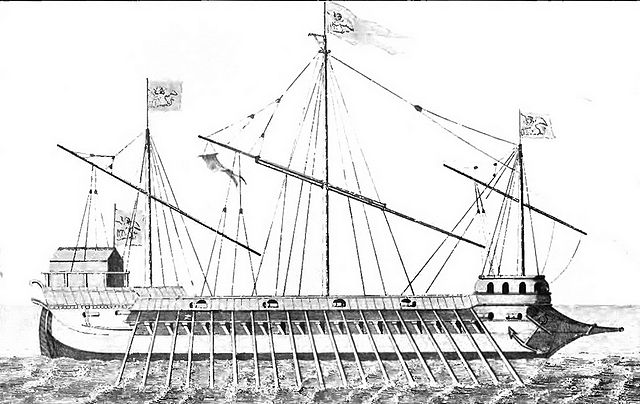The Battle of Lepanto was a naval engagement that took place on 7 October 1571 when a fleet of the Holy League, a coalition of Catholic states arranged by Pope Pius V, inflicted a major defeat on the fleet of the Ottoman Empire in the Gulf of Patras. The Ottoman forces were sailing westward from their naval station in Lepanto when they met the fleet of the Holy League which was sailing east from Messina, Sicily.
The Battle of Lepanto, Laureys a Castro
Order of battle of the two fleets, with an allegory of the three powers of the Holy League in the foreground, fresco by Giorgio Vasari (1572, Sala Regia)
Depiction of the Ottoman Navy, detail from the painting by Tommaso Dolabella (1632)
One of the Venetian Galleasses at Lepanto (1851 drawing, after a 1570s painting)
The Holy League of 1571 was arranged by Pope Pius V and included the major Catholic powers of southern Europe, specifically the Spanish Empire as well as the Italian maritime powers.
It was intended to break the Ottoman Empire’s control of the eastern Mediterranean Sea and was formally concluded on 25 May 1571. Its members were:the Papal States under Pius V,
Spanish Empire under Philip II,
the Republic of Venice,
the Republic of Genoa,
the Knights of Malta,
the Grand Duchy of Tuscany and the Order of Saint Stephen under Cosimo I de' Medici,
the Duchy of Savoy under Emmanuel Philibert,
the Duchy of Urbino under Guidobaldo II della Rovere,
the Duchy of Parma under Ottavio Farnese.
The coats of arms of the leaders of the Holy League (Habsburg Spain, Pope Pius V, Republic of Venice, John of Austria) as depicted in the printed order of battle published on 14 November 1571 by Antonio Lafreri in Rome.





